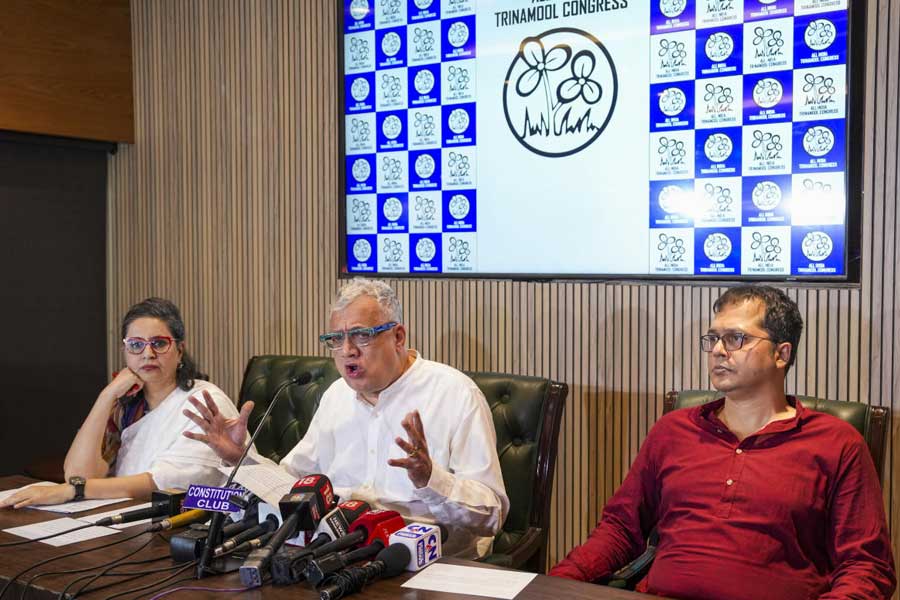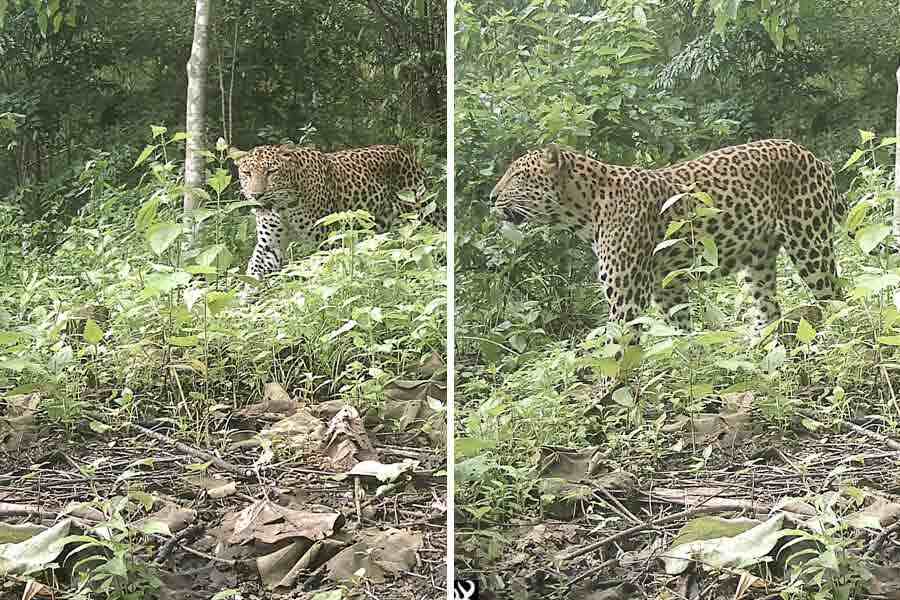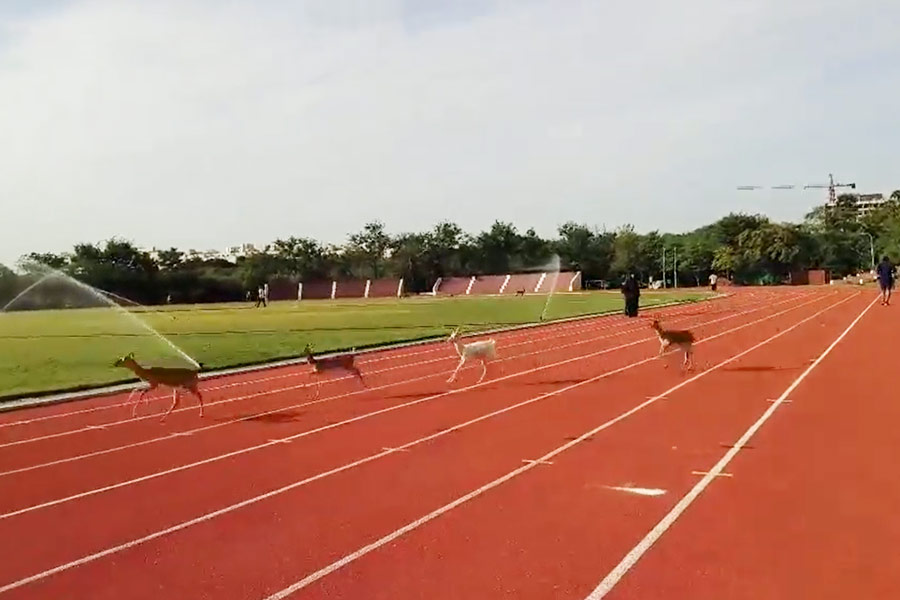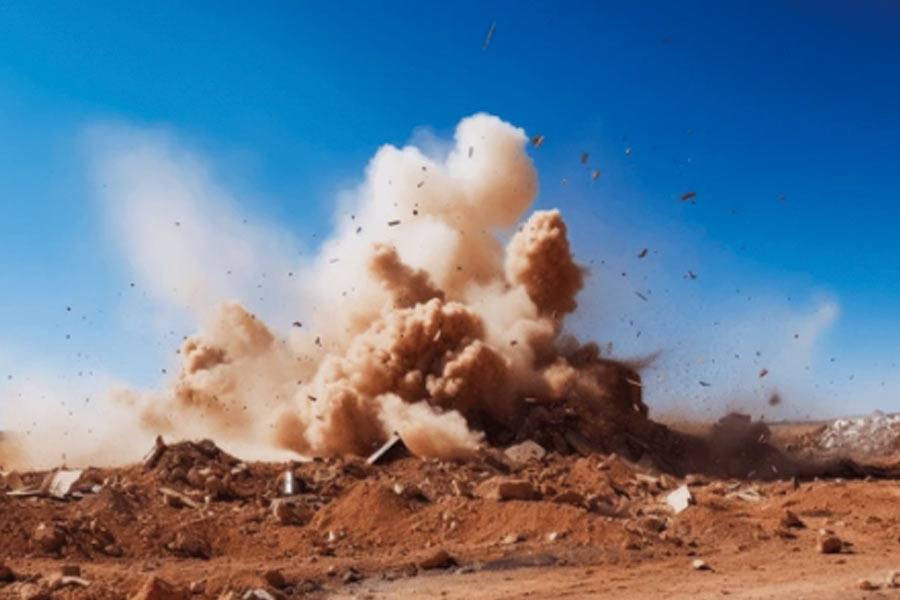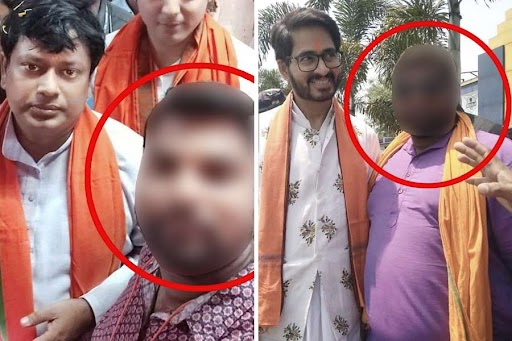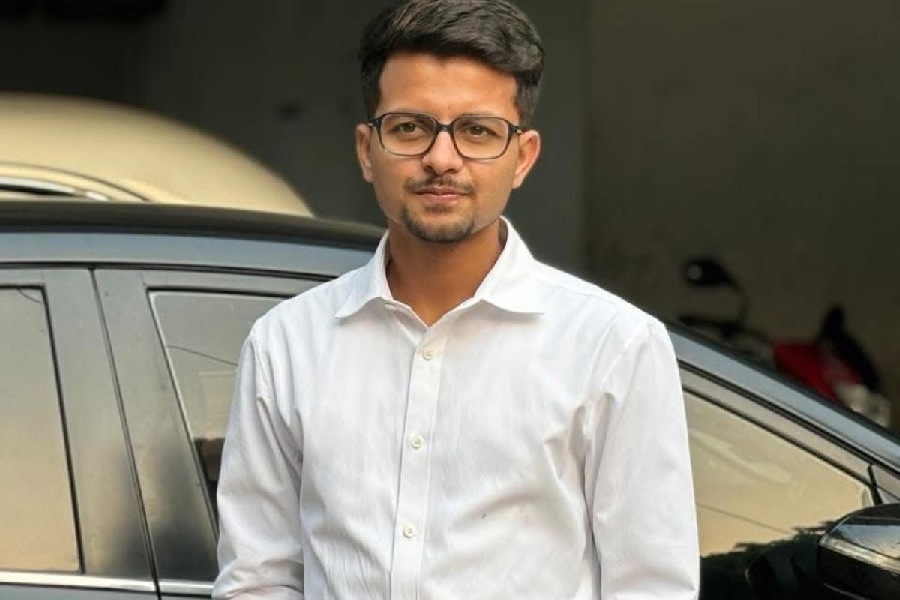 |
 |
| Pages from Ganesh Haloi’s scrapbook. Pictures by Aranya Sen |
When the computer comes to the aid of creativity the result can occasionally be amazing.
When Ganesh Haloi began to take lessons on using a PC from a former student he was already in his 70s. And after working tirelessly for about four years, during which time he rarely took up paint and brush, and severe back pain notwithstanding, he has produced two large hard-bound books on the Ajanta murals based on the sketches he had done when he was employed by the Archaeological Survey of India in 1957 to copy the cave paintings. These replicas on paper can be seen at the National Museum in Delhi.
It is Haloi’s personal Ajanta scrapbook, which he has put together with printouts of his pencil sketches scanned and enlarged, along with elaborate captions and footnotes, all handwritten in pencil, along with a preface and introduction, all by the artist himself.
These are supplemented by several black-and-white photographs taken by the artist in 1968 of the caves and the nearby villages.
It has turned into a fascinating storybook for adults, illustrated by Haloi’s exquisite sketches that give us a fresh insight into the Ajanta murals, the earliest ones dating back to second century BC. While the murals themselves have decayed over the years, Haloi’s sketches provide a glimpse of what they looked like 50 years ago.
Haloi writes in the preface: “The figures of Ajanta paintings are mainly based on line drawings with tonal depth generally found in relief sculpture. In many cases these lines have become hazy, indistinct, blurred and fragmented… This has resulted in various mistakes in interpretations as in the lovely Jataka stories.” Haloi challenges many earlier interpretations of the murals.
After he passed out of the Government College of Art & Craft in 1956, Haloi happened to be in Bodh Gaya when Buddha’s 2000th birth anniversary was being celebrated. It was there that he heard the story of Nandalal Bose’s visit to the Ajanta caves, and about the difficulties he faced while copying a painting with the help of a Petromax. Haloi was filled with an intense desire to visit the caves.
Haloi was 22 when he arrived at Ajanta in Sahyadri hills. He was there for seven years. From then onwards Buddhist literature has become his passion. The Waghura river trips with seven leaps down the Sahyadri and flows in a half-circle along the curve of the gorge above which the caves are located. Haloi sketched a bird’s eye view of the caves from his imagination, which is included in the scrapbook.
The scrapbook opens with a detail of the jewellery in the murals in reverse. Haloi had to master Photoshop to get this just right. Close-ups of Buddha’s hands in the bhumisparsha mudra follow. Enlarged, the pensive expression of Mahamaya’s eyes become clear. The white elephant she had dreamt of meant that her son would either be a great king or an enlightened mendicant. The devil Mara tries to tempt Buddha. His beautiful daughter tries to break his meditation. A deer listens to a sermon, one ear cocked.
Gravity-defying dancers, celestial beauties and musicians accompany Indra. Buddha is being bathed before his coronation. The details of the lanyard are delineated. Waterfowl, foliage and flowers come to life. There are 260 pages in all, displaying 200 sketches. The scrapbook ends with a photograph of the massive sculpture depicting Buddha as he announces his death.


